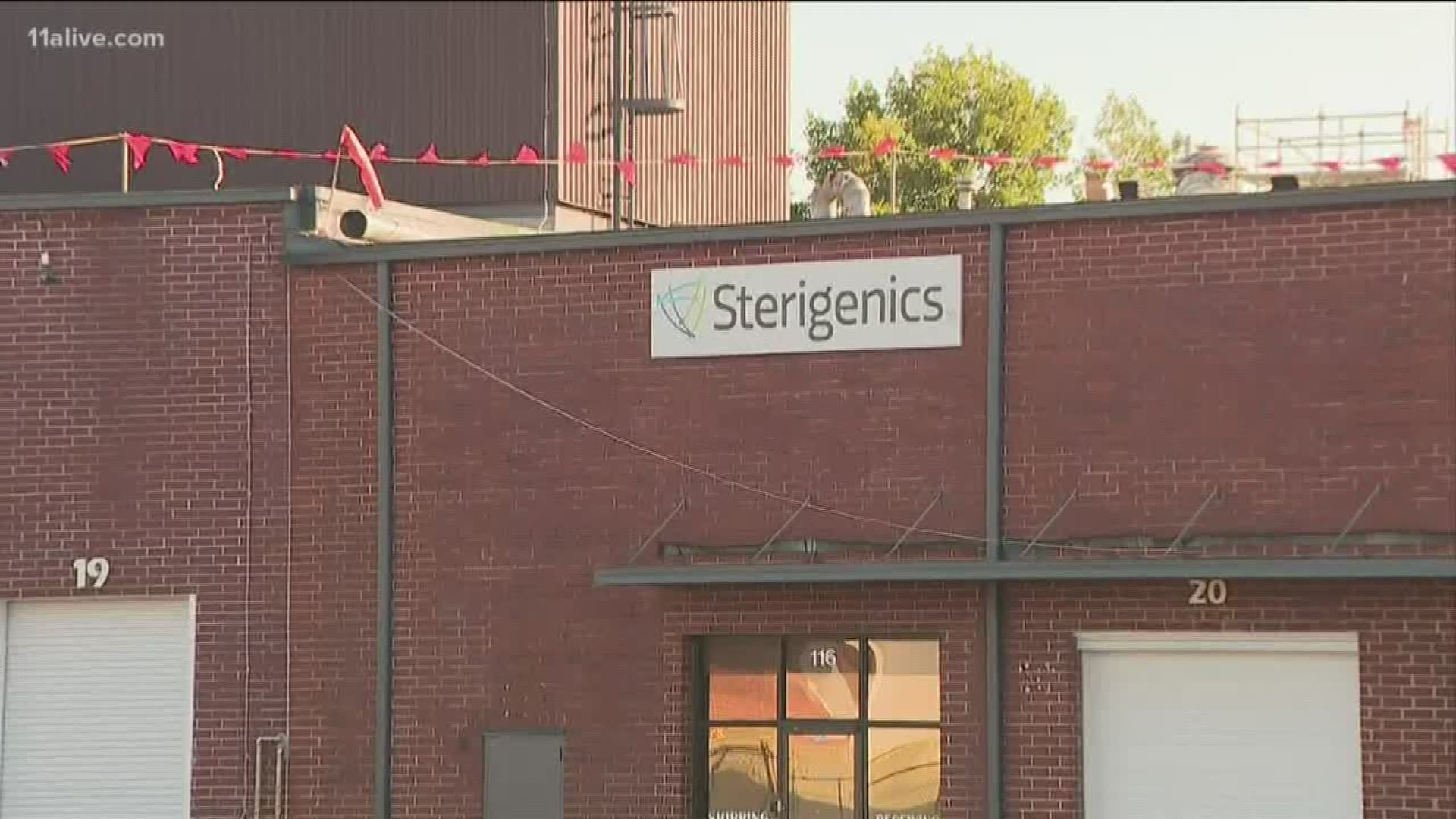COBB COUNTY, Ga. — Sterigenics will be seeing periodic shutdowns as it works to expedite the "installations of enhancements" at its Atlanta area facility, a spokesperson said on Friday.
The company, which has come under increased scrutiny over recent evacuations and the release of ethylene oxide, sent a statement saying that it would be altering its production schedule to speed up construction.
While the specific construction in mind isn't mentioned directly in the statement, the company has vowed to add "scrubbers" to treat air leaving the plant - which is located outside of Smyrna not far from the Cobb-Fulton County line.
Sterigenics came under fire earlier this summer after a report from WebMD highlighted its release of ethylene oxide which is linked to increased cancer risk. Community members and local leaders have called for action to bring down the amount of the chemical released into nearby neighborhoods.
And while Sterigenics has promised many changes, it has recently faced backlash from the community regarding evacuations and leaks - though they typically fell below the threshold for being reportable to Georgia's Environmental Protection Division. The most recent evacuation happened in July, a recent report uncovered.
The move to begin construction projects will mean changes for customers of Sterigenics which rely on the company to sterilize important medical equipment.
Despite the periodic shutdowns or reduced production, the company said in a statement it will be working with customers to minimize the impact on them.
As previously reported by 11Alive, Sterigenics has made moves in the past to reduce the amount of ethylene oxide it releases. Up until 2016, the company pumped out four times as much of the chemical as another plant mentioned in WebMD's report, BD in Covington. That's 3,574 pounds in 2015 compared to 771 pounds by BD.
However, the company added voluntary emissions controls in 2015 that cut the company's emissions to 225 pounds.
Sterogenics has already filed plans with the EPD to begin construction to reduce its emissions from about .02 micrograms per cubic meter to around .0005 micrograms per cubic meter.
MORE HEADLINES

